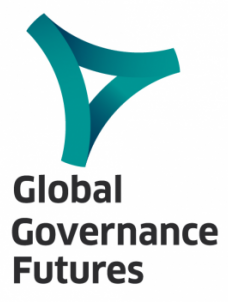Combating Disinformation in China - A Conversation with GGF 2035 Fellow Sophia Qian Xu

This interview was conducted by the Global Governance Futures – Robert Bosch Foundation Multilateral Dialogues, which brings together young professionals to look ahead 10 years and recommend ways to address global challenges.
1. Misinformation is not a new phenomenon and we can see its spread across the world. Is there a difference between how traditional media outlets and social media platforms share misinformation in China?
In China, with the booming social media and increasing number of people using these platforms, misinformation is emerging from online platforms such as the main micro-blogging network Weibo or the popular messaging app WeChat, rather than coming from online media outlets with more public attention. Traditional media outlets usually act in passive responses and could sometimes share online misinformation through sloppy reporting.
 Due to the nature of social networks, I think every piece of content is created in a way to engage with other content to increase clicks and get more shares, comments and likes. So, misinformation naturally becomes more creative and aggressive on social platforms to be more shareable with catchy headlines, dramatic photos or attractive video thumbnails. It also tries to give the impression that information is exclusive to its audience and hidden by the public media as secrets so that not many people have the privilege to know it – this is especially true in China.
Due to the nature of social networks, I think every piece of content is created in a way to engage with other content to increase clicks and get more shares, comments and likes. So, misinformation naturally becomes more creative and aggressive on social platforms to be more shareable with catchy headlines, dramatic photos or attractive video thumbnails. It also tries to give the impression that information is exclusive to its audience and hidden by the public media as secrets so that not many people have the privilege to know it – this is especially true in China.
It seems to me that, at times, Chinese traditional media outlets fall for online misinformation because they rush to follow a trending buzz and fail to keep up verification standards. On Weibo for instance, where the boundaries between traditional media and social media are blurred as nearly every media outlets has its official accounts on this popular social platform, a repost/share/like from them adds a lot of credibility to a post, even though they used “according to online posts/source”. To some extent, misinformation from social media already wins when it lands there as it is difficult to change public impression of any given story with future debunks.
2. You advise institutions in China and abroad on fact checking and content investigation. Can verification standards and fact-checking keep up with the speed at which social media reaches its users and the use of calculated disinformation?
The verification standards have not changed much since I first learned the old journalism fundamentals. It is more about how we apply and adapt them in the new age, as it is indeed challenging to keep up with the speed at which mis- and disinformation develop with new technologies, including artificial intelligence and other data/content programming. For example, we need to introduce new ways to spot deepfake footage, new tools to verify geolocation data and new standards for more digital-based verification in reporting. This is because technological development will make it easier to manipulate content in the future.
The bright side is that we are on alert and trying our best to keep up with these developments. Even though the current work on fact-checking and content investigation in China is still quite manual – it is usually done by hand by journalists and factcheckers with additional support from experts in various professions. Some major social platforms are trying innovative ways to empower fact-checking efforts. For example, WeChat has two verification platforms backed up by a live database of past and trending misinformation reports. This allows its users to search keywords, check the latest misinformation trends, and get push notifications if they have read articles that have been debunked by the platform. This to me is a great starting point in the battle.
3. What role does traditional and social media have when it comes to debunking mis- or disinformation and balancing this with freedom of speech?
To me, social media first came to us as a way to express ourselves, then a channel to connect with others before turning into a place to consume information (watch news, read articles etc.), so the key value of it is still freedom of speech while playing an increasingly important role in tackling mis- and disinformation in influential events such as elections, protests, wars, crisis, etc. Take COVID-19 pandemic as an example: of a health crisis, the main battlefield with medical misinformation is on social platforms where rumors, myths and misinformation about the novel coronavirus have spread as quickly as the virus itself. So, the major social platforms have all been proactive in fighting COVID-19 related misinformation.
Traditional media outlets, though struggling to regain viewership and trust from the younger generations, plays a critical role in debunking misinformation and guarding free speech as they have the incomparable resources and legacy, which social media seldom have. However, traditional media need to review their own verification standards when using information from social media and adopt guidelines in digital reporting to avoid disseminating mis- and disinformation on social networks in order to improve their trust and credibility in their digital reach.
4. Social media trends are constantly changing. Which of these new trends provide the most challenges for journalists and legal regulators when it comes to combating disinformation?
I would say political and medical misinformation trends are equally challenging, but they provide differently types of challenges.
Political mis- and disinformation trending on social media could manipulate public opinions during election cycles and sometimes influence poll results through voter suppression/fraud. There are laws introduced in many countries to fight against this amid criticism about killing freedom of expression as there are a lot of borderline cases for journalists and regulators to verify speculative claims or misinformation.
Just as we experienced during COVID-19 pandemic, medical misinformation which could affect an individual’s physical health, and even cause loss of lives, has flooded social media and provided the most challenging time for media and governments to combat misinformation and at the same time trying to contain COVID-19. Unlike political misinformation, the difficulty in combating medical misinformation is speed and reach, as it really spreads quickly and re-emerges in new formats after being debunked by the media and authorities. This should push policy makers, media outlets, schools, and digital platforms to work together closely to help every netizen get the tools they need and to learn the basics of verifying information efficiently in the digital age. After all, they are the final consumers of information.
Sophia Qian Xu is a director at the social media consulting firm BuzzDecoder in Hong Kong. She is a Global Governance Futures 2035 fellow. Views expressed here are her own.
Photo by Connor Danylenko from Pexels


